The UN and the WHO – Owned by the Wireless Industry?
Guest Post by Sean Alexander Carney of Safe Tech International
Researched and written by Sean Alexander Carney for Safe Tech International.
The future: Turning people into transmitters
Through the ubiquitous wireless connectivity promised by the Internet of Things (IoT) humanity and every living thing is turned into a wireless “transmitter.” As this is currently being done without full consent of the population, across the globe – it raises concerns from a health perspective, and a human rights perspective.
Governments rapidly rolling out 5G tell us that exposure guidelines backed by the World Health Organisation (WHO) ensure we are all safe within “set limits” and, that they readily support the wireless IoT for the purpose of developing a data-driven future epitomised by the smart city, a “vision” of a new society propelled by the UN’s politics of “climate change” and “sustainability”.
The Chinese Communist Party (CCP) has already achieved a data-driven society. However, the CCP is technologically suppressing individual ideas, voices and social groups to align all minds and actions to the “goals” of the Chinese authorities.
Not surprisingly, “China now plays a significant role in shaping the IoT.” Spurred by China, the UK governments are already introducing facial recognition technologies, configuring internet censorship legislation and for their own benefit have even planned to overhaul the Human Rights Act, which allows citizens to hold the government to account. The world is changing rapidly, and unfortunately technological advancements favour unprecedented opportunities for a totalitarian government system to emerge. The late social theorist Paul Virilio, once said that “Totalitarianism is latent in technology”. Clearly he has a point.
One World – Under “wireless”
The United Nations (UN) and the World Health Organisation (WHO) seek to shape the IoT, and governments, in accordance with a globalist “one world” view and conceive of the worlds nations as finally dissolving into a centralised global order. Wireless technology is presenting opportunities to change society rapidly.
Governments around the world are responsive to UN technological and environmental policies aligned with the UN’s concept of “sustainability” and these are driving 5G expansion, anticipating an increasingly automated technological society heavily dependent on the wireless networks.
The UN wishes to conform the whole of society to live in an environment high in radiofrequency radiation and subordinate to “sustainability” doctrines, while the WHO is focused on digital health solutions and conforming nations to its “pandemic preparedness” and “technological solutions” doctrines. Both organisations neglect widespread concerns concerning potential health impacts from radiofrequency radiation (RFR) – even though it is widely accepted that children, the elderly and people with electromagnetic hypersensitivity (EHS) are highly vulnerable to RFR. Not all people are treated equally in this globalist “one world” view of health and human rights.
Many of us assume that United Nations and the World Health Organisation are defenders of our liberties and welfare. However, first and foremost they are a “forum” for members to influence policy. Therefore, it is more accurate to say that these organisations allow industries and political organisations to steer political outcomes that affect our liberties and welfare, through their memberships, donations, and funding. From this perspective the wireless industry has great influence on the UN and WHO (if not carte blanche to shape politics to their advantage), as we will see.
Workhorses of the wireless industry
Both the UN and the WHO are invested in technological empowerment and at the same time are affecting our liberties and welfare by reforming policies and engineering social behaviours to the tune of Sustainable Development Goals (SDGs) and “Digital Health (DH)”. These are far reaching projects that rely first and foremost on expansive digital infrastructure and wireless networks.
The SDG and DH projects are sustained through the development of the Internet of Things (IoT), a project which electronically connects physical devices, vehicles, manufactured goods, and other physical objects in society – and the natural world – across the expanse of the earth to wireless networks facilitating the sharing and collection of data.
The UN and the WHO are very dependent on the wireless industry – to a phenomenal degree – as are their stakeholders and members. All are invested in SDGs and DH expecting significant profits and are guiding the political agendas of the UN and WHO into the wireless “smart” future. (UN) Secretary-General António Guterres is even “An engineer who has taught telecommunications so what better leader to facilitate a wireless agenda and sustain the wireless industry into the future.
With the UN and WHO so dependent on wireless technology, and their stakeholders so invested in it too, can they be relied on to protect health and human rights? Or are they biased, and “bought” by investing so deeply in the promise of the IoT and the 5G infrastructure?
The UN and WHO are aligned in pursuing increased powers. They encourage a data-driven future – a surveillance economy (like China’s), and. at any cost it would seem. They do not want to acknowledge the harm such social transformation will cause, the economic consequences and divides, nor the health impacts. In fact, as the “pandemic” shows, catastrophe spurs technological agendas, especially when technology is always offered as part of “the solution”. The pandemic 5G roll out was an example of “seizing opportunity in a crisis”, increasing the power of the wireless industry manifold, as well as accelerating the IoT.
Both the UN and the WHO are deeply invested in the wireless industry – but how deep is deep?
The Wireless Health Agenda
Following its inception after the Second World War, the UN incorporated the International Telecommunication Union (ITU) as a specialist agency for advancing wireless telecommunications internationally.
The ITU is “…committed to connecting the world” and helping the UN with ICT (Information and Communications Technology) aspects of Agenda 2030, promoting universal internet access, and assisting other digital goals. As a result, Europe embraces the “Digital Decade“, and the “global community” follows suit with parallel objectives of “digital transformation” for sustaining wireless technologies into the “smart” future.
Nothing helped kickstart the IoT more than the “pandemic”, during which the ITU announced that, “Smart sustainable cities worldwide are fully leveraging information and communication technologies (ICTs) to enhance the digital health and wellbeing of their inhabitants. These cities are utilizing digital infrastructure to deliver vital health information, track health trends, and locate essential health resources.” Source.
It is within this “post-pandemic” digitally “interconnected” smart world that WHO advances its “Digital Health” goals, pursuing these objectives in partnership with the European Commission (EC) which tables laws for adoption in the European Union.
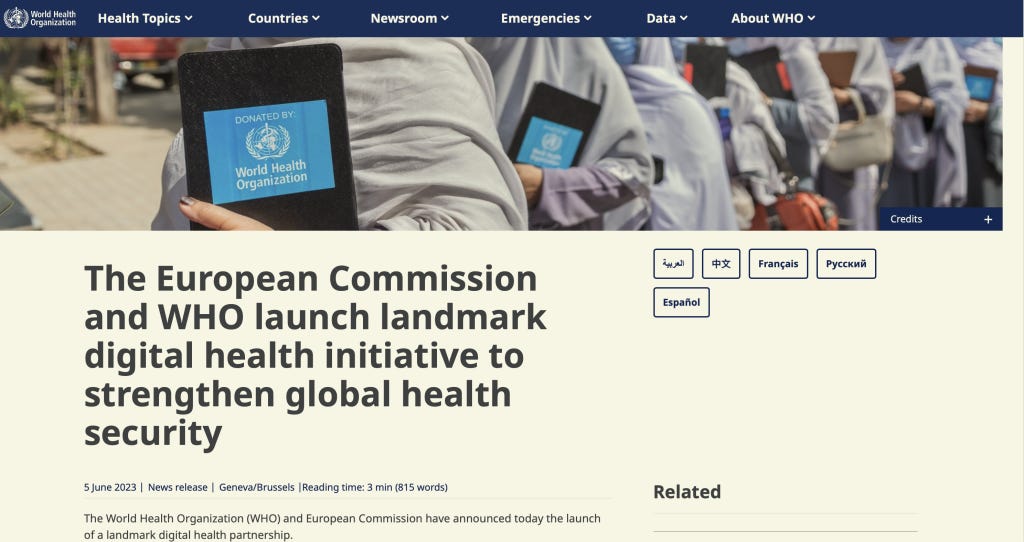
The WHO’s “One Health” exemplifies the widening reach of WHO’s anticipated technological forays, and is described as “an integrated, unifying approach to balance and optimize the health of people, animals and ecosystems. It uses the close, interdependent links among these fields to create new surveillance and disease control methods….The C0VID-19 pandemic put a spotlight on the need for a global framework for improved surveillance and a more holistic, integrated system.” The language emphasises treating the “whole” not just a part. It all feeds back into a “power grab” called the “Pandemic Treaty” which emphasises control over the whole population.
Wireless technology has arguably encouraged WHO’s agenda of enhanced global surveillance. Smart phone’s were made for tracking us (accommodating GPS, AI tools and sensors). Our data a political and economic currency and WHO, and the UN, wants everyone to have a smart phone as a citizen of “the global community” – preferably as surveilled and as compliant as Chinese Communist citizens are, thanks to 5G.
According to the Carnegie Endowment for International Peace, “At least seventy-five out of 176 countries globally are actively using AI technologies for surveillance purposes…[and]…Liberal democracies are major users of AI surveillance…The most important factor determining whether governments will deploy this technology for repressive purposes is the quality of their governance.” As the UN and WHO model their appetite for “global change” on China’s technological social and economic “gains” – espousing smart cities and digital monitoring of the population – we’d be advised to keep a close eye on developments.
Smart Phones For Health
The WHO is promoting health markets that sustain mobile phone use as a health measure. Many would argue that promoting exposure to radiofrequency radiation doesn’t seem like something the WHO should be doing. Yet the WHO facilitates the wireless future and supports the digital market – the future.
According to the WHO, the “Public Digital Health Technology (PDH) team engages with a variety of stakeholders in digital health…to…provide support to countries to adopt and scale quality digital health technologies.”
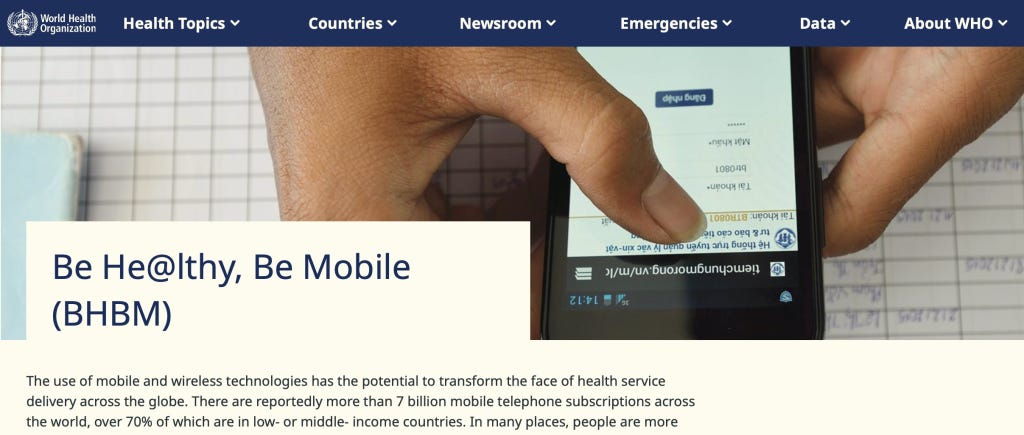
Digital Health has long been in the pipeline. We know because WHO states that the “Be He@lthy, Be Mobile (BHBM) initiative was set up by the World Health Organization (WHO) and the International Telecommunication union (ITU) in 2012.” The use of a mobile phone to access digital health treatments (apps, text messages, etc) is called “MHealth”.
WHO and the ITU couldn’t wait for 5G. We all know when it arrived – throughout the WHO’s “pandemic” along with a truckload of other necessary technologies to advance Digital Health, and data surveillance.
The WHO’s commitment to wireless wearables
The WHO stated in 2020 that, “5G is expected to increase performance and a wide range of new applications, including strengthening e-Health (telemedicine, remote surveillance, telesurgery).” Source.
According to the WHO, “The use of mobile and wireless technologies has the potential to transform the face of health service delivery across the globe. There are reportedly more than 7 billion mobile telephone subscriptions across the world, over 70% of which are in low- or middle- income countries. In many places, people are more likely to have access to a mobile telephone than to clean water.” Wireless needs are catered for above essentials like clean water?
WHO promotes wireless wearables
The WHO is promoting studies advocating (wireless) mHealth and wearable health technologies (mobile phones are also considered “wearable health technologies”) which are advertised as “improving personal health.” They typically use radiofrequency (RF) transmitters meaning that “wearable health devices” expose the user to radiofrequency radiation, at very close range.
Though they may initially reduce the workload of clinicians, wearable health technologies may expose problems that don’t exist, having a negative effect on health and wellbeing. Doctors already recognise they can give false positives, worsen health anxieties – and can in some users feasibly become part of a cycle of “digital addiction” (for users feel compelled to share their personal health tracking data on social media).
The WHO’s motivation for promoting “digital health” is arguably for the collection of health data to influence policies. Data is the currency of our times, providing stakeholders in the health market (and third parties) with insights that can be exploited and can quickly add up to profits.
Under the influence
For a long time it has been questioned whether the WHO is impartial and objective concerning wireless radiation research, especially when the scientific literature increasingly shows a range of bio-effects and non-thermal health impacts from radiofrequency radiation.
Is the WHO to be trusted, or is it vulnerable, and open to manipulation from the powerful wireless industry which can benefit from the dampening public concerns about wireless radiation?
It was observed in the British Medical Journal (BMJ) that “WHO has a funding problem [and] reliance on voluntary donations exposes WHO to the undue influence of contributors.” Is it outside influence, inner influences, or both that leave the WHO vulnerable to conflicts of interest in the shaping of its scientific information and recommendations for health?
The WHO’s conflicts of interest (including in the assessment of potential harms from electromagnetic fields (EMFs) and radiofrequency radiation) have been widely condemned.
Many scientists see how deeply the wireless industry influences the WHO. But what can they do?
Many scientists consider it a big problem for health that the WHO hasn’t acted to support the precautionary principle with regards international roll outs of 5G. Concerns about 5G are ignored (by the EU, the UN for example), even when 438 medical scientists and doctors urgently request a moratorium “until proper scientific evaluation of potential negative consequences [of 5G] has been conducted.” Source. The scientists have been requesting this since 2017.
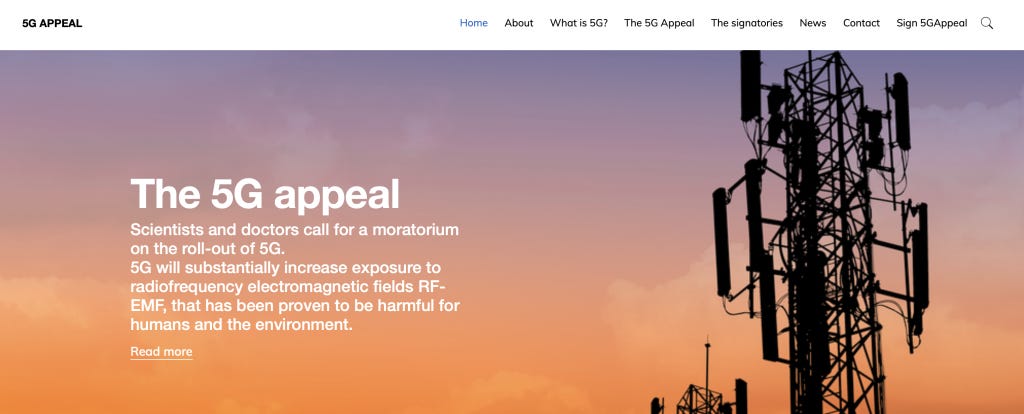
Oncologist Lennart Hardell is clear about the issues. He informs us that, “In May 2011 the International Agency for Research on Cancer (IARC) evaluated cancer risks from radiofrequency (RF) radiation. Human epidemiological studies gave evidence of increased risk for glioma and acoustic neuroma. RF radiation was classified as Group 2B, a possible human carcinogen. Further epidemiological, animal and mechanistic studies have strengthened the association. In spite of this, in most countries little or nothing has been done to reduce exposure and educate people on health hazards from RF radiation.”
People are largely uninformed about the health risks of 24/7 exposure to 5G, a new technology that is still underpinned by 4G LTE networks and brings new radiofrequency modulations and millimetre waves into the environment, something of an experiment on humanity with total disregard for those most vulnerable to RFR impacts, like children and the electrohypersensitive – a huge section of the population.
Managing the public mind
Extensive control of health information regarding RF exposure is a priority of the wireless industry. This creates a filter system for suppressing certain findings, pointing the public towards a reassuring “safety” narrative, where the public largely believe continuous exposure is harmless.
A private NGO called the International Commission on Non-Ionising Radiation (ICNIRP), which has “formal relations” with WHO, influences the scientific reviews of the WHO concerning RF health matters. ICNIRP’s views influence government agencies and sustains the view in the media that wireless radiation isn’t harmful.
ICNIRP, which describes itself as “independent and non-profit” produces RF exposure guidelines that are adopted by governments globally. Microwave News reported that in the 2020 RF Guidelines ICNIRP reported that there is no evidence for cancer. However, the U.S. National Toxicology Program found “clear evidence” that exposure to RFR can lead to cancer. Source.
The guidelines crafted by the “industry loyal NGO” set the tone of public policy on radiofrequency exposure levels. ICNIRP promotes the opinion that, other than thermal health effects there is only ‘suggestive, but unconvincing’ evidence” of biological and non-thermal health effects. ICNIRP rejects the view that bio-effects are a concern.
ICNIRP’s perspectives on existing research are used by governments, not in the sense of RF exposure “guidelines”, but as a “gospel” that has become empowered to such a degree that it is utilised to approve roll outs of wireless technology and to influence public expectations to the point of suggesting that 5G is safe.
The population, as a result, is misinformed about the potential risks because of ICNIRPs scientific biases that omit biological findings that are very significant. It’s a veritable boon to the wireless industry, promoting information that ultimately sustains a plethora of economic gains for the industry. What about the WHO and its commitment to the global community’s health?
The promise
Before the “pandemic” WHO had promised “a health risk assessment from exposure to radiofrequencies, covering the entire radiofrequency range, including 5G, to be published by 2022” courtesy of the WHO’s “International EMF Project” team of researchers. It was delayed, and the review has been published in 2024 asserting that “Mobile Phones Are Not Linked to Brain Cancer According to a Major Review of 28 Years of Research.”
Some of the review’s authors have close ties with ICNIRP, including Ken Karipidis, Sarah Loughran, Maria Blettner, Mark Elwood, Susanna Lagorio Dan Baaken, Martin Roosli and Maria Feychting who wasn’t listed as an author but designed it. Source.
In all the “biased” review gives a green light to digital health as a “safe” product, as well as possibly influencing global exposure policy for a very long time. It comes at a critical time, because stakes are high in getting the digital wireless agenda firmly in gear, and profitable, so industry stakeholders, member states and the UN will be pleased to chug ahead with their technological agendas.
Questions are already being asked about the review (published in Environment International). According to Microwave News, “The results of this review were never in doubt. The WHO managers, who selected the Karipidis team, knew what to expect —and they got what they wanted.”
The late Michèle Rivasi and Klaus Buchner of the European Parliament commissioned a damning report about the activities and behaviour of ICNIRP called “The International Commission on Non-Ionizing Radiation Protection: Conflicts of interest , corporate capture and the push for 5G” Here, we confront the reality that “ICNIRP pretends to be scientifically neutral, and free from vested interests of the Telecom industry. We show with this study that this is ‘playing with the truth’ or simply a lie.”
The Nuremberg Code
In 2018 Karl Muller (an independent journalist and researcher, and licensed radio operator with the Eswatini Communications Commission, based in the southern African Kingdom of Swaziland) called for the removal of the International EMF Project because “…the WHO continues to deny that there is any sign of any danger whatsoever from wireless technology.”
His revealing article includes “a lengthy correspondence chain with the World Health Organization and the United Nations” that he accuses of complicity in “genocide”. Source.
Genocide is a strong term. Is it justified?
Scientists opposed to 5G roll outs and inadequate radiofrequency exposure guidelines, have openly condemned WHO and ICNIRP for cherry-picking scientific studies that support industry-friendly findings which are not in the interests of protecting public health or the environment. Yet, they have always been reluctant to use the highly emotive term “genocide” in reference to the potential widespread harm to the population from what amounts to either a deliberate attack on public health, or an experiment.
In Karl Muller’s assessment “…the International EMF Project, the World Health Organization, the United Nations itself, all spit on the Nuremberg Code every day.” We may come to agree with this assertion as we come to terms with the fact that the global population are being subject to microwave technologies such as 5G in what can only be described as an experiment, with unknown long-term consequences for our species, or all others with which we share the planet.
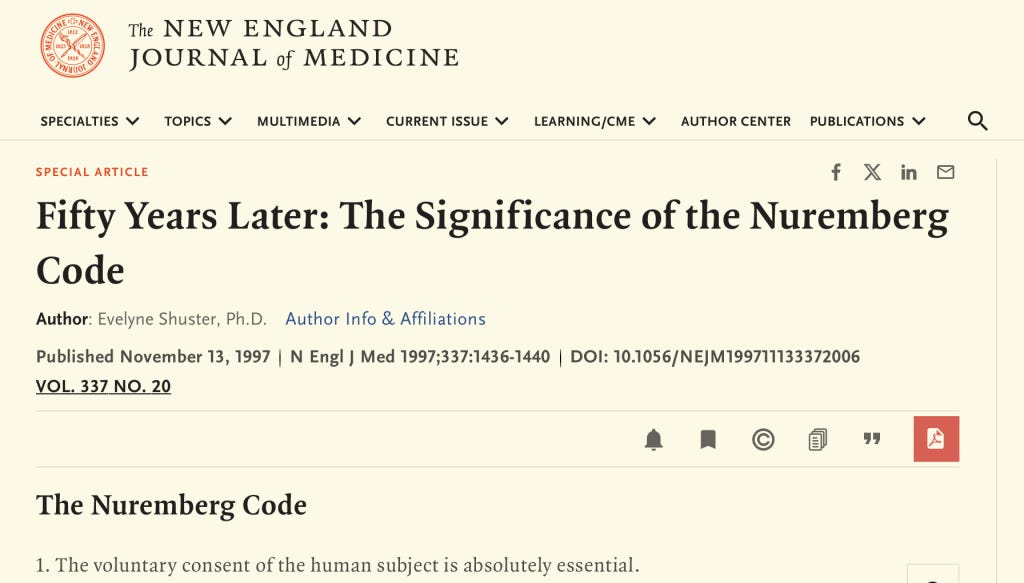
Far from independent
It is the opinion of many scientists and researchers that ICNIRP contrives RF guidelines to deliver exactly what the WHO wants to hear, invested as it is in the wireless industry for its digital services and, no doubt, its survival.
Headlines about the International EMF Project review, such as The Guardian’s here, will no doubt reassure the public, but to what avail?
The WHO’s new “science” distorts reality, denying us a balanced picture of health. In the context of the organisations long plan to emerge as a promoter of mobile phones and wireless trends, it may at last come as nor surprise to many, but amounts to a tragic insult to the public who look to their “guardians” to keep them “safe”.
Why the UN promotes and protects wireless interests
It’s a human right to own and use a smart phone. Is it now the most “politically” valuable human right that the UN wants to protect the most?
Smart phones are proudly advertised on WHO and UN web pages, which are designed to influence the public at large. It reflects how human augmentation by technology is made socially acceptable. The UN promotes a technologically augmented Human 2.0 society that relies on wireless products to exist, where “humans” are ID tagged and permanently tracked like a profitable product by the UN and its stakeholders. Many academics argue we are on the precipice, gravitating towards a post-human, post-human rights world where the currency is data, fuelling a surveillance economy, where the world, and “humans” are “smarter”.
Data (our personal information) means profit for organisations like the UN. The population are accepting technolgies of augmentation, acclimatising to the UN’s goals within a Big Data future. Member states, transnational corporations (stakeholders) and wealthy interests bank on the UN to deliver us all into an existence governed by the data we produce.
The augmenting of humanity, which will proceed towards implants beyond smart phones and “wearable” technologies (which are developed to collect a growing spectrum of personal data) reflects “transhumanist” aspirations shared by wireless technology industry cheerleaders like Klaus Schwab, founder of the cultic World Economic Forum (WEF).
He is a UN Agenda 2030 advocate and supports the view that human are “hackable animals”. He has told the monopolising stakeholders invested in this “agenda” that “the future is built by us”for the “fusion of our physical, our digital, and our biological dimensions.”
The UN has long pursued a “one world” view incorporating a politically beneficial wireless digital agenda. Within that scope, “internet governance” plays the role of transforming society’s perceptions, digital freedoms, and expectations. The UN has long helped this process along through the ITU, but has seized the opportunity to “control knowledge” by developing censorious approaches.
The UN considers the public untrustworthy in cyberspace, it seeks loyalty, and condemns the “trafficking of lies, fear and hate.” It is a human right to be critical, have opinions, or to be in error. Yet the UN doesn’t want people with their smart phones engaging in free speech, especially in a crisis, it wants compliance with its ideological stance and statements.
Are we not free to interpret the UN or world events as we see fit? Is the UN building digital walls to compartmentalise public access to information and knowledge? The UN lists information crimes such as “nativism”, exploiting a crisis, or targeting minority groups, for example. The UN is free to decide what that all means, and enlist the support of Big Tech and transnational corporations to eradicate it.
The UN’s desire, like the Chinese authorities (CCP), is to control the global conversation, and public information streams, as highlighted during the pandemic. The UN digitally recruited “messengers” from across the globe to influence communities, as attempted through an initiative called “Verified” which emerged during the “pandemic.” This was led by the Department of Global Communications which promotes the “official” UN stories in the media and across digital platforms, to build the UN’s image.
The information crisis picked up on during the pandemic became known as an “infodemic” by organisations like the UN that infiltrated public forums and communities in order to sustain compliance with the “official pandemic narrative”.
Most recently “The United Nations launched new Global Principles for Information Integrity, “emphasizing the need for immediate action” and advertising the ideological sustainable development goals that the UN’s digital “censorship” agenda satisfies (see below).
Rebranding for the wireless “smart future”
It’s clear that the UN wants deeper control of information, to aid in the realisation of its political, globally impacting, aims. It is preparing for this by building data capacity (using more wireless technologies and energy guzzling servers) because “Nurturing modern data capacities is about making shifts in expertise, processes and technology so that entities improve how they collect, handle, govern and use data from more diverse sources to generate deeper insights for better decisions – powered by advanced analytics, machine learning and visualization techniques.” AI is going to play a deep role in “world peace” and the UN will rely on its predictive analytics.
This is all part of a huge rebranding exercise. In recent statements we learn that the UN is rebranding as UN 2.0 and in its report “Our Common Agenda” stipulates that “behavioural science” will be a core component in managing public expectations and driving compliance with its aims. The UN 2.0 Policy Brief rebrands the UN as “a powerful fusion of data, innovation, digital, foresight and behavioural science expertise.”
Behavioural science for corporate goals is rooted in, and assists, the creation of propaganda and espouses the work of social manipulators like Edward Bernays who worked for the tobacco industry, which helped destroy health. It provides the means to manipulate the behaviour of populations, and manufacture “consent”, something both the UN and WHO are so desperately trying to do in a concerted attempt to increase their powers.
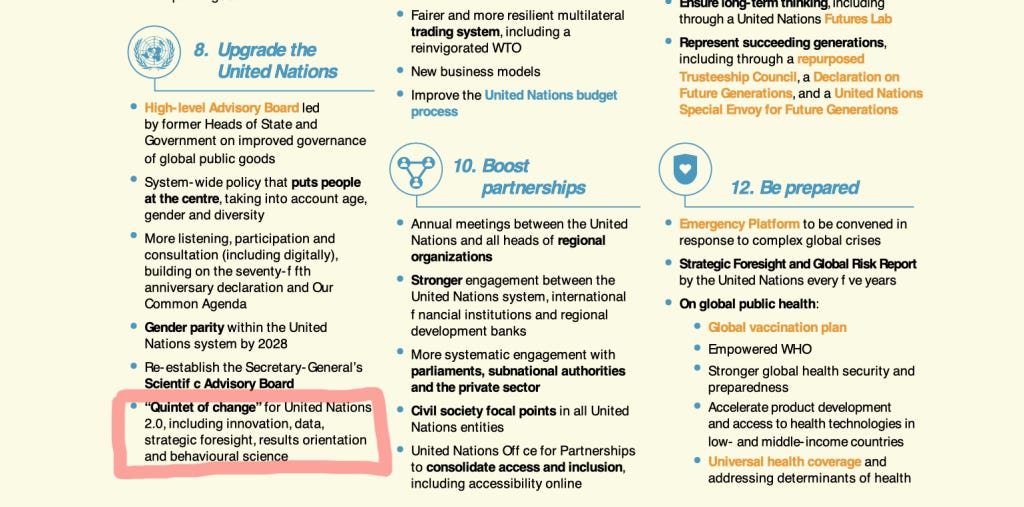
There is a clear desire to manipulate and transform society through the “sustainability” goals. According to the World Economic Forum, “UN member countries [have] pledged their renewed commitment to accelerating the delivery of the goals…”
Both the WHO and UN are, as a result of their technological pursuit of increased power over populations, knee deep in wireless contracts, and as always are protecting and funding the wireless industry on which their shared goals rest. Deutsche Telekom is a prime facilitator of the organisations’ digital agendas, particularly with regards to “United Smart Cities”, which is coordinated by the ITU.
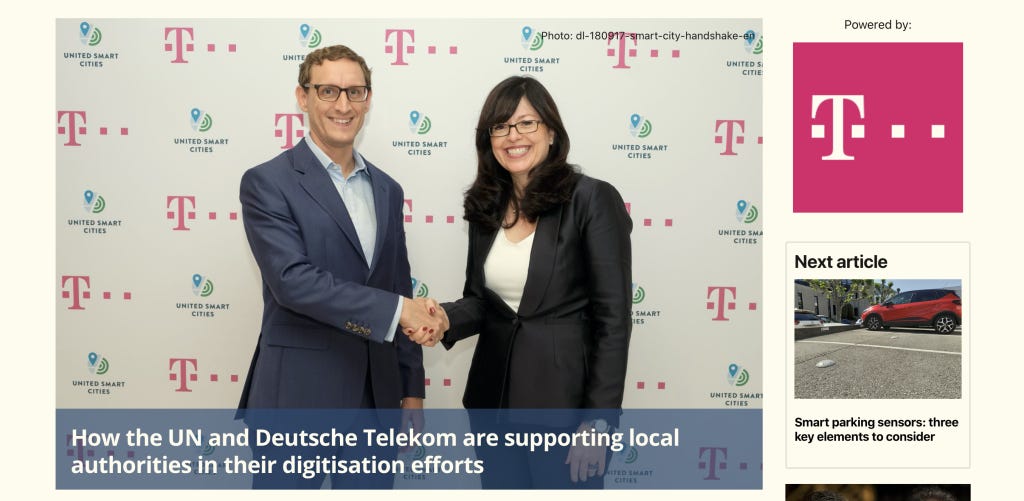
“United Smart Cities (USC) is a programme set up by the United Nations Economic Commission for Europe (UNECE) and OiER in 2014. Building up smart and sustainable cities, improving life for all citizens and managing upcoming challenges are part of the United Nation’s Development goals.” “USC is aiming to set up a holistic ecosystem to support our cities of the future.” Source.
In 2022 Deutsche Telekom was chosen by WHO to create a “global health passport”, beginning the digital discrimination road to health app-artheid. Telecoms.com reported “The World Heath Organization, which had such a great pandemic, wants to ‘facilitate’ its 194 member states to introduce digital vaccination certificates. To do so it’s setting up a ‘gateway’ to standardize the issuing of QR codes that confer privileged health status to their owner. Deutsche Telekom subsidiary T-Systems has been chosen as an industry partner to develop the vaccination validation services.”
The control exerted on the UN and WHO by wireless interests is incongruent with any responsibility they may claim to have regarding the protection of human rights and health, for it renders the organisations at the beck and call of transnational corporate interests that steer the organisations’ agendas and funding.
As a result of the UN’s priority (its stakeholders’ needs, not the interests of the population), wireless interests have become aggressively expansive and politically protected. For society that means the wireless industry is at greater liberty to threaten health, privacy and, even what it means to be human.
The reality of Wireless Growth
UN and its profiteering stakeholders, see wealth as a means of reducing the impacts they have on the environment. Within the “sustainability” game’s rules they are permitted to calmly trade in carbon credits – a new system of impunity, where companies can purchase the reduction of their own “carbon footprint.” Some think that they will “save the planet” by planting more trees or investing in renewable energy”.
This “logic” permeates wireless companies and is meant to score points with the public in support of UN sustainable development goals (SDGs). According to AZO Cleantech, “Through emissions offsetting reforestation, the company said it can essentially provide carbon-neutral calls, texts and data.” By the magical rules of the carbon credit system.
AZO Cleantech alerts us to a significant statistic. “The wireless communications industry is not the first industry that comes to mind when people talk about emissions or increased sustainability, but actually, it does represent a significant share of global carbon emissions. According to research published by mobile phone maker Ericsson, the overall telecommunications industry accounts for about 1.4% of emissions worldwide. By comparison, the aviation industry generates 2% of all global carbon emissions.” Not only that, a wireless device is a polluter because “…personal devices make up the biggest share of the telecommunications industry’s carbon footprint. About 50% of device-related emissions are associated with usage and the other 50% is associated with device life cycle. Networks and data centers account for the next biggest emission shares in the telecom industry.”
With the Internet of Things (IoT) such pollution is set to increase exponentially, but in its sustainable goals, the UN has no intention of releasing facts that sully the image of the wireless companies, and could scupper the sustainability project.
According to AZO cleantech, “Expert predictions have forecasted that internet usage will annually increase by 30-40%. If this comes to pass, there will be 30 times today’s internet traffic in just 10 years. This will translate to the telecom industry comprising 60% of global energy use.”
Though the UN esteems wireless developments, the reality is that “the wireless industry has not been very proactive with regard to emissions.” While the wireless industry claims it is cleaning up its act, there can be no doubts that it is pure “green-washing”. Such behaviours are not uncommon among industries playing the “sustainability game”, and we can appreciate how the facts contradict the stated aims of the UN’s “sustainability” project by contributing significantly to pollution.
The Club of Rome
The wireless industry along with political organisations like the Club of Rome have long controlled the direction of the UN, leading us up to this point where the human population is brought to kneel at the temple of wireless interests in the name of “sustainability”.
“Sustainability” is influenced by the Club of Rome, and has become a catalyst for ticking all the boxes necessary to advance wireless telecommunications infrastructure and technology integrating the activities of the wireless industry within a “green” sustainability narrative. The human race is the enemy and technology is here to redeem society.
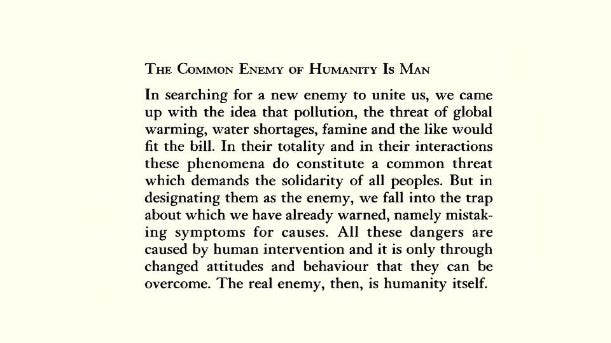
For the Club of Rome, “The networked knowledge society is nothing less than a paradigm-shift form the industrial model of the two past centuries. It can introduce new patterns of social structure and behavior, of public and private organization, of production and trade. It can re-define the links and relationships between people, nations and religions.” It can also fuel a future of unprecedented “extractive” practices for rare earths and minerals, and other environmentally unhelpful impacts, as well as geopolitical impacts, to sustain the wireless infrastructure and technologies required to achieve such a socially transformative plan – but that isn’t acknowledged. Promoting the wireless networked society (data driven Internet of Things, ultimately) is the priority.
At the 2003–2005 World Summit on the Information Society The Club of Rome was a guest of the UN’s wireless agency – the International Telecommunications Union (ITU) – in support of the “emergence of a networked knowledge society” with “ICT (Information and Communications Technology) as an Innovator for Sustainable Development.”
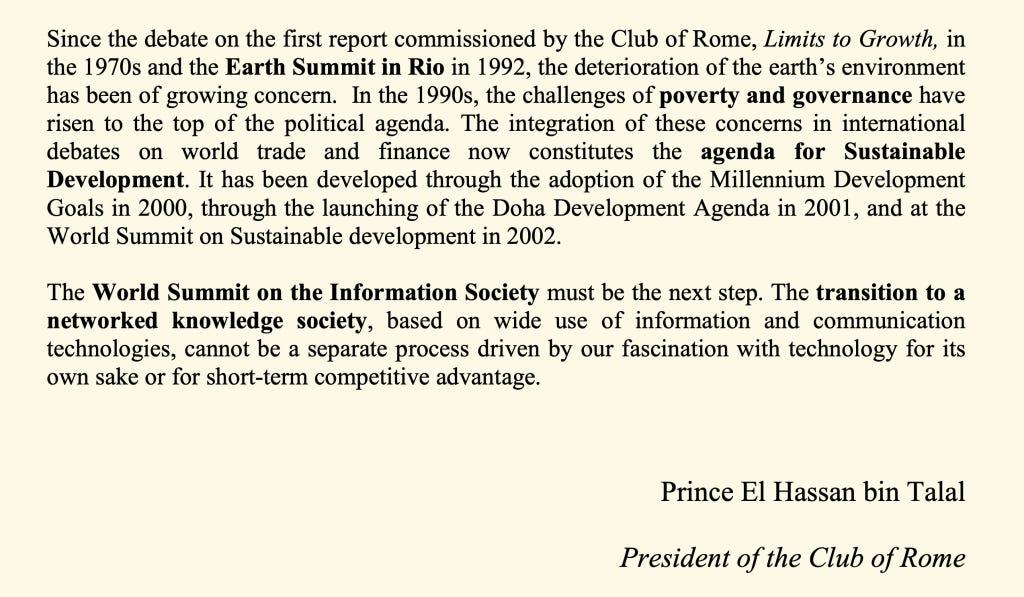
The Club of Rome advocates “Taking advantage of the wireless communication facilities” and believes “education for ICT is necessary to promote the use of local knowledge with new technologies.” That is exactly what the UN’s wireless agenda (Agenda 2030) has put into motion. Its a “green” agenda that masks the true environmental cost of the wireless industry as the UN, influenced by the Club of Rome, “sustains” the industry’s impactful practices and future empowerment.
The wireless industry is “at home” in the UN
The wireless industry has always felt at home within the decision-making apparatus of the UN. Shortly after its inception in 1945, the UN became responsible for helping nations adopt radiofrequency telecommunications and evolving new wireless technologies. This happened because The International Telegraph Union (formed in 1865) became an influential participating organisation.
The ITU is an influential representation of wireless industry interests. It is now named the International Telecommunications Union and describes itself as “the United Nations specialist agency for information and communication technologies – ICTs.”
Because “the ITU membership includes hundreds of private-sector organizations, as well as 193 States” it has been very influential and effective in expanding wireless infrastructure and technology across the globe.
In 2005, as part of the World Summit on the Information Society held in Geneva and Tunis, The ITU advanced the Tunis Agenda for the Information Society (backed by the Club of Rome) to help stakeholders expand the information society (wireless telecommunications infrastructure and internet management) into developing countries and close global digital divides (between countries, not social classes).
This “information” agenda called for a multistakeholder internet governance and stressed a “development-oriented Information Society” as well as a commitment to achieving the Millennium Development Goals (MDGs) – which were broadened in scope renamed sustainable development goals (SDGs) after the MDG effort had largely failed by 2015.
Then came the 2030 Agenda for Sustainable Development (a.k.a. Millennium Development Goals, Round Two), which comprises 17 goals emerging from a report called “Realizing the future we want for all”.
Wireless development is visibly at the heart of all of these “sustainable” development goals and the ITU describes itself as an enabler in achieving the SDGs. Naturally, all wireless companies across the globe promote their activities accordingly in line with “sustainability” which the UN describes as supportive of accelerating technology for “ensuring information integrity in an era of deep-fakes and disinformation; and reinforcing the multi-stakeholder foundations of Internet governance”. All digital technology is promoted as “sustainable” today, and a wireless satellite features on the “Summit of the Future” poster where the public aren’t consulted about that future.
Advancing the “Information Society” for the ITU has now become advancing the Internet of Things (IoT) in all of its facets – which advances wireless infrastructure for the future of “digital everything”. Promoting smart technology and smart cities make it plain SDGs are for “sustaining” the wireless industry for digital technology development. This project “sustains” a wireless surveillance economy advanced by the UN/ITU and it’s stakeholders where reaping rewards from Machine Learning and Big Data translates into power and profits to the tune of a surveillance economy (epitomised by China’s IoT society).
In 2005 the ITU suggested World Internet Day to promote the ITU’s need of the internet, but sold as recognising “digital divides” and the need to heal them. In 2006 World Telecommunication and Information Society Day was invented by the ITU.
It’s all helped to promote wireless dependency, which binds stakeholders across the board to pursuing what the UN and ICT desire: the wireless interconnectivity of everything on earth for the IoT, in the name of “sustainability.” We know that this is a radiation grid formed from wireless infrastructure and devices, subjecting all living things and global resources to quantification and wireless surveillance.
The sustainability agenda has gained renewed urgency with the recently announced “Our Common Agenda” brought by the UN “to forge a new global consensus” even though it is clear not all people agree that the wireless agenda in store represents an “inclusive” or universally acceptable future vision.
The outcome will be an “…action-oriented Pact for the Future [that] is expected to be agreed by Member States through intergovernmental negotiations on issues they decide to take forward.” The private sector will dictate a renewed social contract that state institutions and the individual are expected to accept. The United Nations 2.0 will emerge, powered by “data, strategic foresight, results orientation and behavioural science” to sustain wireless everything and an empowered WHO and “global vaccination plan. The rest of the key proposals for accelerating the SDGS are here.
Conclusion
The UN and WHO are investment opportunities for philanthropists (Rockefellers and Gates Foundations, for example) and other vested interests like the private sector. Health governance and world governance are attractive to powerful interests, and these interests shape these organisations, as well as discourse and public understanding about them. Agenda 2030 is a valuable asset.
With the rebranding of the UN, and the damage control exacted by the International EMF Project, you can be sure that the Agenda 2030 is about to pick up pace. Are the UN and the WHO really “looking out for society”? Is Agenda 2030 about inclusivity, human rights and protecting the health of all – or is about censorship, population control, social engineering and ideological goals to deliver a technological society driven by data and smart technologies using China’s template? We should bear these questions in mind in light of a new social contract being “pushed” by the UN, which will no doubt be putting the wireless industry and transnational corporate interests above the concerns and interests of the population.
Based on ideas from the Club of Rome to control and limit human populations and control society through technology into the future – on the basis of “human-caused climate change politics” – we can see that many aspects of the “sustainability” driven project are highly questionable, under scrutiny, and favour the advancement of a “holistic” wireless digital agenda that may look and feel good in the marketing (behavioural science) sense, but in reality is full of fatal contradictions.
The “theories” that hold up both the sustainability goals (and the radiofrequency exposure guidelines that favour the activities of the wireless industry), are concerned with dangers from the thermal aspects of radiation (solar, and artificial EMFs), and look to synthetic models to present “solutions” that take us so very far from an existence in balance with nature.
ICNIRP, rejects radiofrequency-induced bio-ffects, and temporal factors related to such bio-effects, excluding biological studies. It prefers the “physics” of modelling, and not experiments concerning biological specimens. This is why ICNIRP derives its theoretical exposure guidelines from RF radiation affecting a synthetic dummy filled with gel (a Specific Anthropomorphic Mannequin – SAM). ICNIRP’s (and therefore the WHO’s) bias against biological studies (like the NTP study) continues, and is putting public health at risk, for we are biological and come in all shapes and sizes, unlike the SAM.
Climate science is based on modelling the future on computers for “predicting global warming” in which AI will play an increasing role – the models are prone to failure, and can’t accurately predict. In addiction, all predictive programs (including AI itself) are subject to the biases of the persons interpreting data, giving input/hypotheses. They are not immune from political and ideological biases, and errors.
Both synthetic “mannequins” and synthetic “modelling” sustain politicised theories that are managing public perceptions and expectations – like managing public spending with economic “projections”.
In short, the WHO has a monopoly on the science that governs public health in relation to exposure to wireless radiation and the UN has a monopoly on “climate science” in relation to rallying “multilateral” international action (co-ordinated by stakeholders and member states) and plans for rapid technological manufacturing (Industry 4.0) and rapid implementations (5G, 6G, Big Data, Internet of Things, Smart Cities, etc).
The UN and WHO are biased, and are using questionable theoretical information to shape our futures, and our health. It is questionable whether is the UN is protecting human rights, or the WHO our health, in the future being planned, but it is abundantly obvious that the wireless industry is highly favoured in the UN’s and WHO’s vision of the future, and operates with impunity as it pollutes and continues to put the population’s health at risk.
It is said that “climate change is physics….[and that] modelling is our best window into the future.” According to the ITU (the telecommunications arm of the UN), they are glad they have a UN Secretary General that “speaks their language“. He is after all, a physicist and engineer who has taught telecommunications.
He is the “right” political choice, sympathetic to the telecommunications industry and it shows as he is proposing a purely wireless future, which is being justified by prevailing climate change theories that are rely largely on modelling to inform the UN’s dire environmental forecasting (which is so relentlessly being used as a political tool, and a social engineering opportunity).
The UN, soon to be rebranded as the UN 2.0 is incorporating behavioural science into its arsenal (because Agenda 2030 isn’t winning people over as much as needed?) is “teaching” or rather preaching, that a society governed through wireless technologies will bring a healthier, “sustainable” and inclusive future for all.
Can it be an inclusive future, for all? the UN turns a blind eye to the human rights abuses happening in China, which includes slavery for the production of wireless technology components. This forced labour is for supply chains which many Western companies, and notable Big Tech firms rely on. According to Walk Free, “Forced labour is exacted under the guise of vocational training and poverty alleviation…”
It is true much can exacted when the ideological goals and the parties exacting them clothe them in the guise of “worthy causes”, but this political trend is ultimately promoting totalitarianism in the guise of “improving the world” – and wireless and Big Tech firms reliant on electronic components and minerals for manufacture, are influencing such a political trajectory, based on extracting astronomical profits through the IoT/Sustainability markets, as well as unprecedented power over the population.
As the UN is reluctant to address the issues the CCP has come to “enjoy a growing sense of impunity [and] tries to exploit the openness of institutions in democracies to impose its world view and silence its critics.” Sounds like the wireless industry! And, we do see the UN and WHO, in pursuit of their ideological imperatives, SDGs and DH, doing everything they can “to silence the critics” – who in their eyes have little to offer but “misinformation”.
The UN’s and WHO’s technological projects for the future society, if successful will bring immense powers to these organisations, but none of it could ever be achieved without the wireless industry, the Club of Rome, and politically biased manipulations of science.
Featured opening illustration by Sean Alexander Carney.



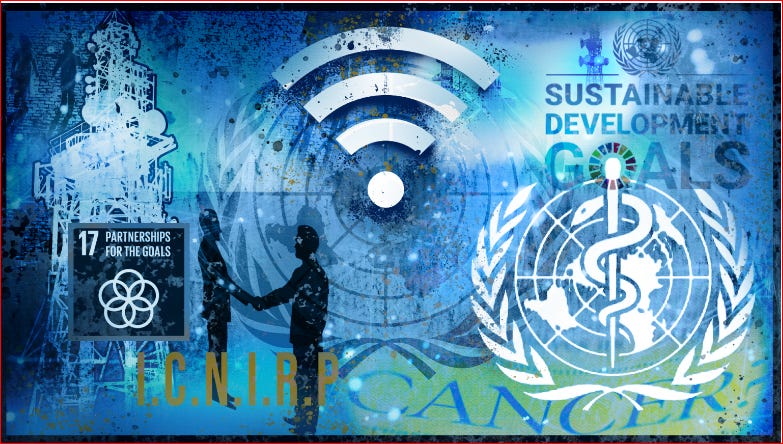
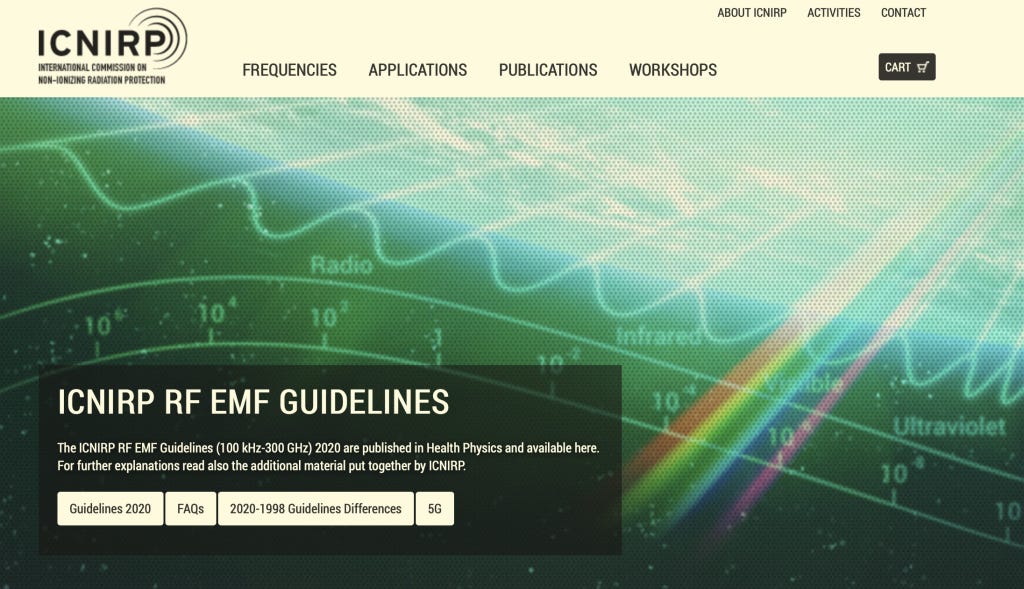
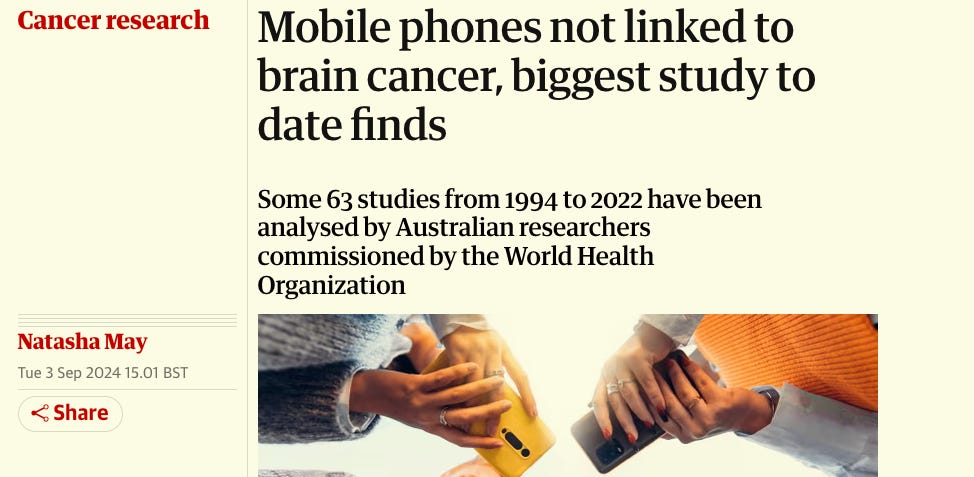
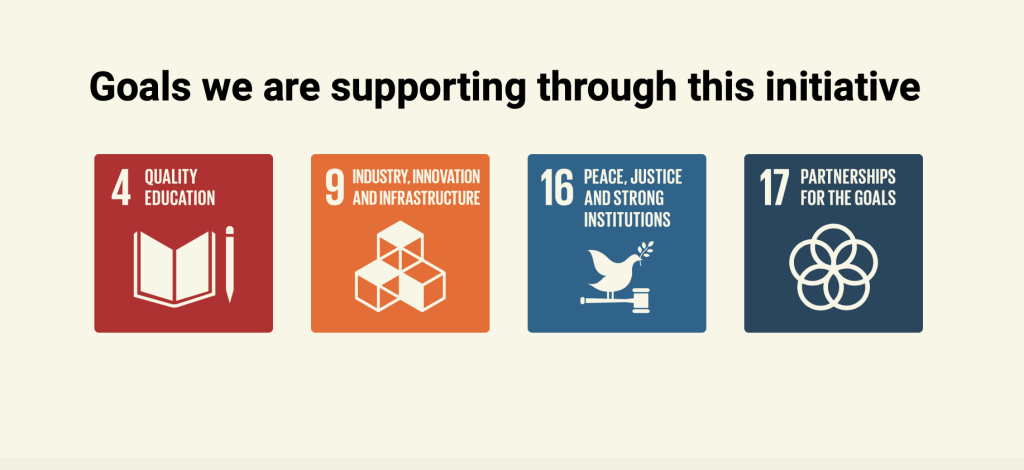
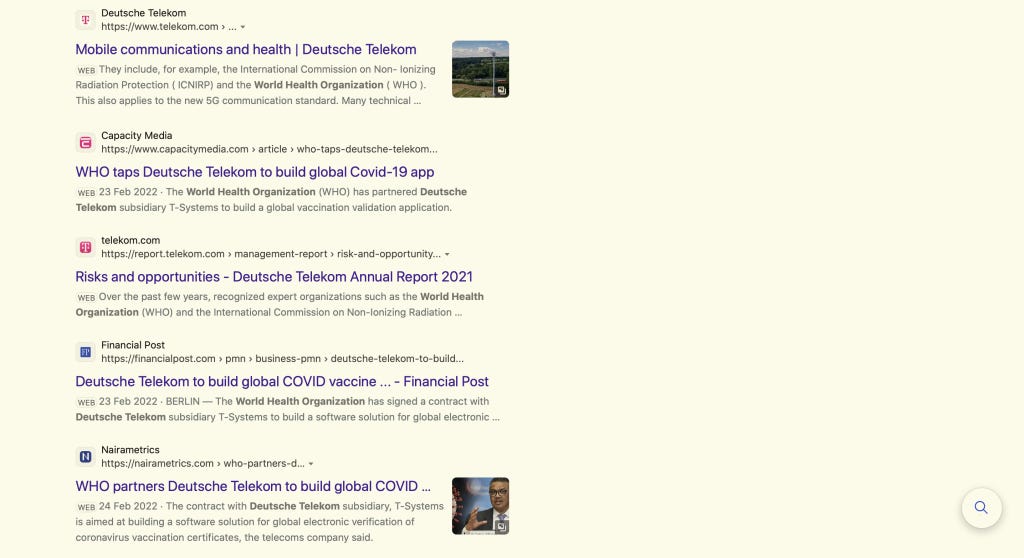
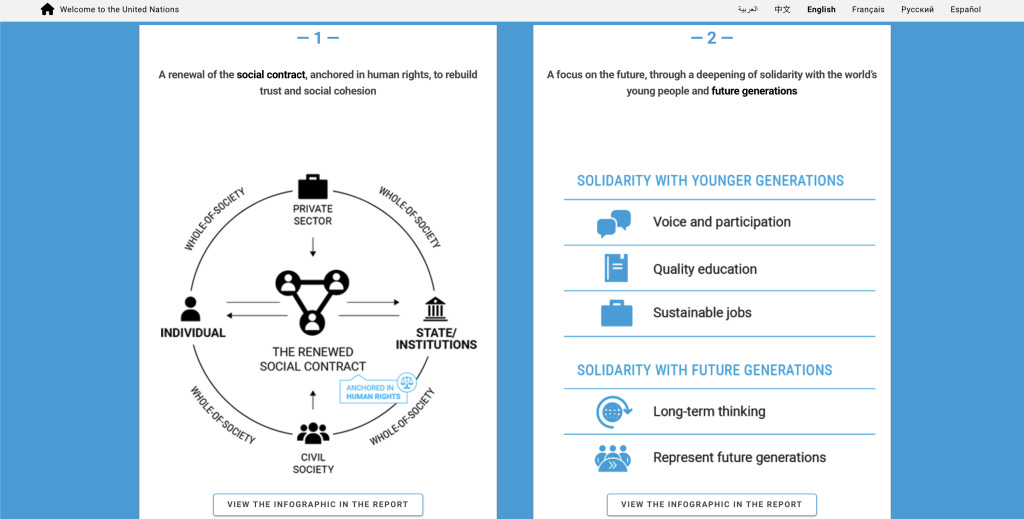
And Black Rock and Vanguard own every corporation below them.